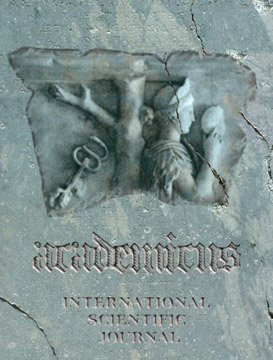Rorty on Language and Social Practices
Rorty on Language and Social Practices
Author(s): Michele MarsonetSubject(s): Social Sciences
Published by: Academicus
Keywords: Language; Social practices; Metaphysics; Linguistic Turn; Reality; Holism
Summary/Abstract: Richard Rorty wrote on many occasions that called the linguistic turn was an attempt to keep philosophy an armchair discipline. “The idea - he said - was to mark off a space for a priori knowledge into which neither sociology nor history nor art nor natural science could intrude”. Linguistic analysis, in short, has become with the passing of time a sort of first philosophy, aimed at replacing metaphysics (which the founding fathers of logical positivism gave up for dead). Two opposite conceptions of language are at stake here. The first says that language is something self-explanatory which, in turn, explains everything else. This means postulating type A objects, i.e. unexplained explainers in terms of which type B objects - the explananda - can be accounted. The second conception claims, instead, that there is no actual distinction between type A and type B objects. All objects are on a par, but in a particular sense. Rorty resorts in fact to the Quinean-flavored simile of the net and its nodes. Rorty’s is an intelligent move. Since there is no longer ineffability and unavailability, all problems seem to be solved. Is this true? We have good motives to be suspicious because, after all, Immanuel Kant must have adopted that kind of model for some reason, and Ludwig Wittgenstein himself struggled with the old problem of the gap between reality itself and our representations of it. Rorty proclaims his faith in holism. In contrast to the assumption that there can be entities which are what they are totally independent of all relations between them, a Davidsonian (and also Quinean) holism claims that “all entities are merely nodes in a net of relations”, which gives us a picture of the following kind: “No intrinsically simple objects, no pictures, and no language. For if analysis could not end with such objects, then whether a sentence has sense would depend upon whether another sentence were true - the sentence which specifies that two simpler objects making up a composite stand in the relevant compositional relationship”. The great issue at stake here is the relation between ontology and epistemology. Most interpreters would answer that such a distinction is untenable in Wittgenstein’s thought, and in particular if we take into account the second phase of his philosophical parabola. But, notwithstanding this common opinion, we are confronted with a great problem, namely, that of determining what really is the reference framework about which Wittgenstein so often talks, and which is supposed to be shared by all human beings as such. He frequently says in his works that skepticism raises doubts when no M. Marsonet - rorty on Language and sociaL Practices 31 questions can be asked, while Monk correctly describes his endeavor in On Certainty as one aimed at showing “The point at which doubt becomes senseless”.
Journal: Academicus International Scientific Journal
- Issue Year: V/2014
- Issue No: 10
- Page Range: 030-038
- Page Count: 9
- Language: English

